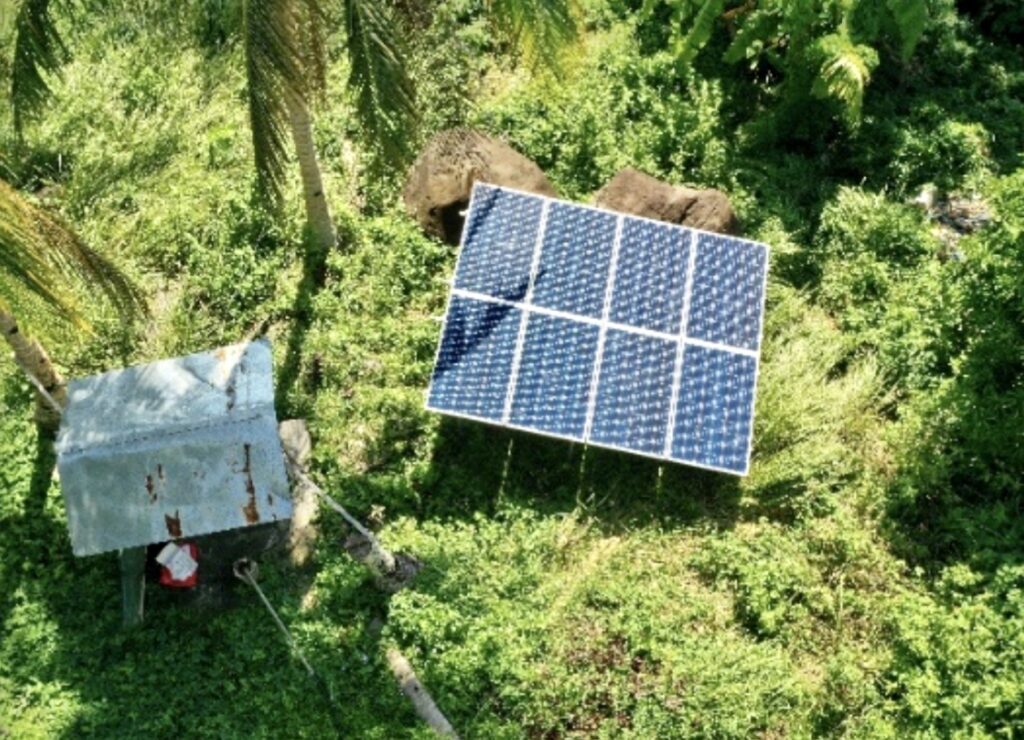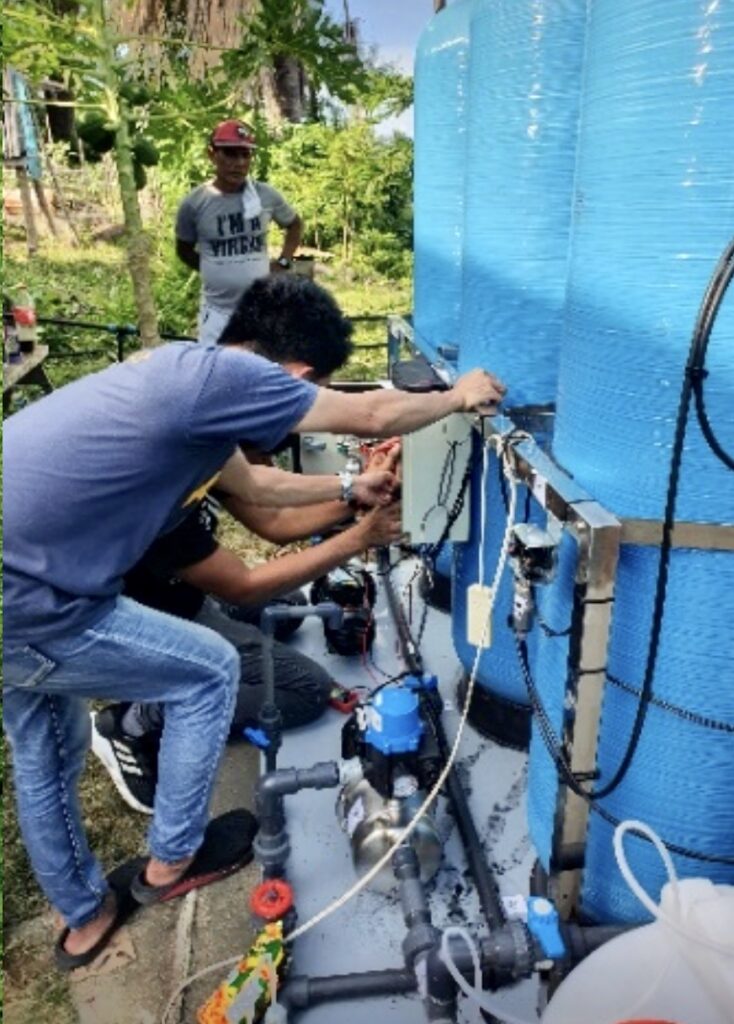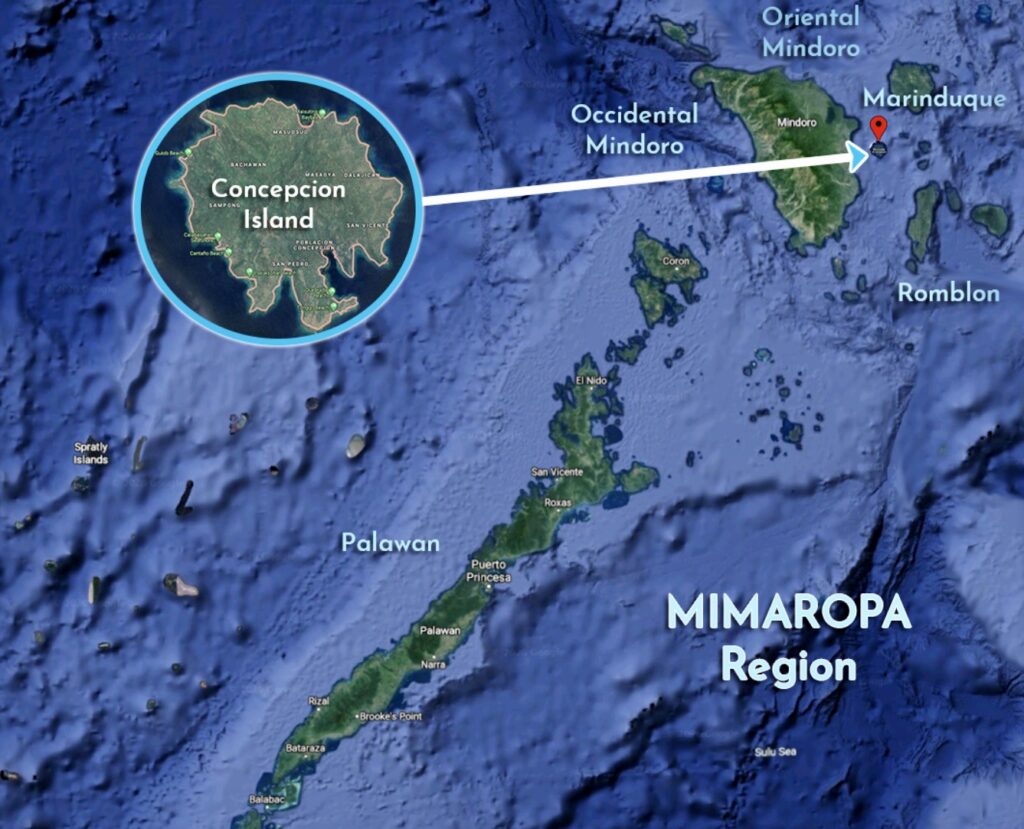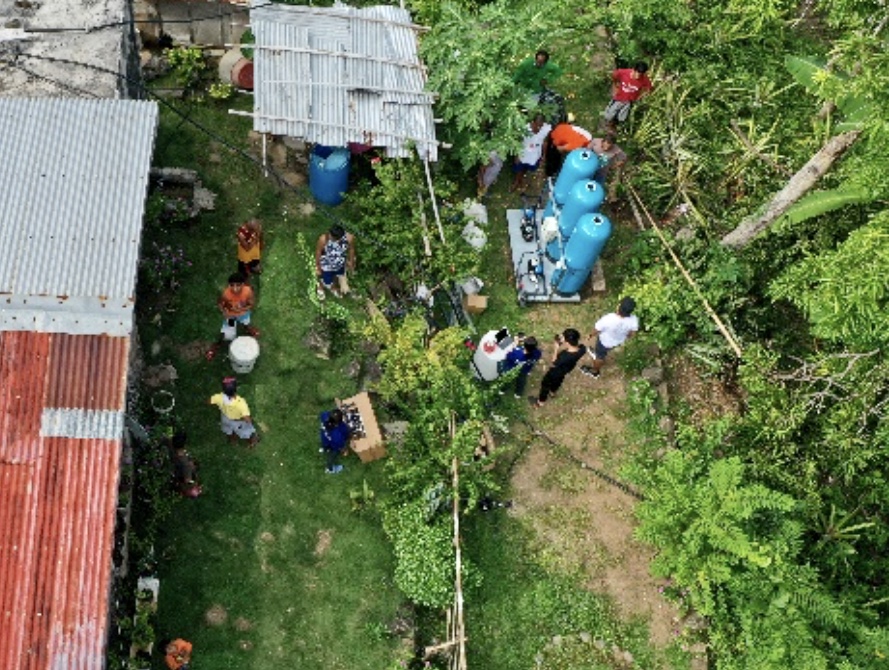By Henrylito D. Tacio
Photo credits: DOST
Except for those who study geography, not too many Filipinos know where Romblon is. This archipelagic province, which has a total population of 292,782 as of the 2015 census, lies south of Marinduque and Quezon.
Romblon is composed of several islands, with Tabias as the largest. Among the smaller island municipalities, Concepcion is the farthest from the provincial capital (as it takes five hours to travel between the town and Romblon). It is also far from the nearest commercial capital, Odiongan.
“The island is mountainous with steep shores,” Wikipedia describes. “Its settlements are dispersed along the coast with the población on the south shores. The island’s interior is jagged and forested, with caves, clear rivers, unique rock formations, and hills that offer extensive views. Every village has its own cove and white sand beaches which are used for swimming and scuba diving.”
Despite its dreamy and touristy-like description, Concepcion has one big problem: it suffers from limited access to safe and adequate water. “The residents only rely on rainwater collected using basins and pails and deep wells powered by an electric pump as their water source,” Charlotte F. Pizarras, a staffer of the regional office of the Department of Science and Technology (DOST).
Although propelling water using an electric pump is a viable option, its operation is unlimited due to high electricity costs. The DOST installed a solar-powered water pumping system with a filtration and treatment facility to solve this problem.

There are nine barangays on this municipal island. The solar energy system-powered water pump was provided to barangay Masadya, touted to be the poorest barangay, through the DOST’s Community Empowerment through Science and Technology Program.
According to Pizarras, in the past, the residents in Masadya, compared to those with other barangays, were only given two hours in the morning and another two in the afternoon to get the water their families’ needs.
“Barangay officials were forced to limit the water collection hours to avoid incurring high electricity costs,” Pizarras reports, adding that each family is required to pay P50 per 10 cubic meters of water per month and an additional P5 per extra 10 cubic meters for the use of the deep well to sustain its operations.
“On average, barangay Masadya is paying P7,000 solely for electricity, which they admit can be utilized for rather more valuable expenses for the community,” Pizarras states.
Aside from the high cost of pumping water, the water quality that is sourced from the water pump is also salty and metallic in taste. Health experts believe these pose many health risks to the residents.
When a household is not able to save enough water within the 4 hours allotment, they have to endure traveling to the next barangay with a water supply. Barangay Poblacion is about 7 kilometers away.
“It is the barangay Masadya’s dream to reduce this drudgery to improve the health of its residents and give more opportunity to spend more time on income-generating and other productive activities,” Pizarras says.
With the recent installation of the solar-powered water system with filtration and treatment facility, continued access to clean and safe drinking water at any time of the day is now guaranteed. About 400 residents from barangay Masadya and those from adjacent barangays can now benefit from the improved water source.

In addition, the system’s water filtration and treatment facility greatly improve the quality of water.
“With the technology, the water’s metallic taste has been removed and its brininess has been reduced by 90%,” Pizarras reports. “Since it is solar-powered, it also helps the community manage their water needs in an environment-friendly way.”
The barangay local government unit maintains the technology and ensures that families can collect as much water as they need that is also assured clean and safe.
“Malaki po talaga ang pagkakaiba ng lasa ng tubig namin. Hindi na sya maalat, kaya panatag na kami na hindi kami magkakasakit,” said Erlindo Fanoga Jr., Masadya’s barangay captain.
Other interventions to guarantee their water supply’s sustainability and reliability include training on the operation and maintenance of the solar-powered water system with filtration and treatment facility and provision of ceramic water filters to 50 households from other barangays.
Pizarras says the science department recognizes the importance of water security to ensure sustainable rural development and resilience. This is especially true in this time of battling the coronavirus disease 2019 (COVID-19) pandemic “where sanitation and hygiene serve as the primary defenses.”
The water problem in this municipal island is not an isolated case. It is happening in other parts of the country. According to Dr. Rafael D. Guerrero, a national scientist with the National Academy of Science and Technology in the 1950s, the Philippines had as much as 9,600 cubic meters of clean water per person, according to Dr. Rafael D. Guerrero, a national scientist with the National Academy of Science and Technology.
Four decades later, Filipinos must make do with little more than a third for that volume – 3,300 cubic meters per capita.

Recently, the Philippines ranked second from the lowest among Southeast Asian countries in terms of per capita water availability per year with only 1,907 cubic meters, according to a World Bank report. Thailand was at the bottom, with 1,854 cubic meters. Vietnamese had more than twice what Filipinos get: 4,591 cubic meters.
The Philippines is not yet what hydrologists call a “water stressed nation.” That label applies when annual water supplies drop below 2,740 liters per citizen. Among the countries which are listed as such are sub-Saharan nations like Egypt and Saudi Arabia.
While the country is still not “water stressed,” it already has areas suffering from “water scarcity.” Four river basins – Pampanga, Agno, Pasig-Laguna, and Cebu’s island – are experiencing water scarcity.
During summer months, many Metro Manila residents – home to more than 10 million people – are coping with a “water supply crisis.” The cities of Cebu and even Davao have already experienced the same “status.”
The three major cities – along with six others (Baguio, Angeles, Bacolod, Iloilo, Cagayan de Oro, and Zamboanga) – were identified by a study done by the Japan International Cooperation Agency in 1991 to be “water-critical areas.”
“Water shortages lag only climate change and population growth as a threat to the human future,” said Lester R. Brown, president of the Washington, D.C.-based Earth Policy Institute. “The challenge is not to get enough water to drink, but to get enough water to produce our food. We drink, in one form or another, perhaps 4 liters of water per day. But the food we consume each day requires 2,000 liters of water to produce, or 500 times as much.”
A closer look at the available statistics proves him right. Agriculture is by far the biggest consumer of water around the world – nearly 70%, according to the United Nation’s 2018 Water Development Report. “Agriculture is where future water shortages will be most acute,” wrote Michael S. Serrill in the newsweekly Time some years back.
Take the case of growing rice. In his book, Water: The International Crisis, author Robin Clark reports that the amount of water needed to produce one ton of rice would fill between two and three Olympic-sized swimming pools.
The Laguna-based International Rice Research Institute (IRRI) claims growing one kilogram of rice with traditional irrigation consumes enough freshwater to fill 25 oil drums.
“The link between water and food is strong,” Brown pointed out.

